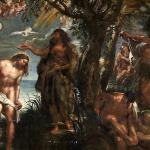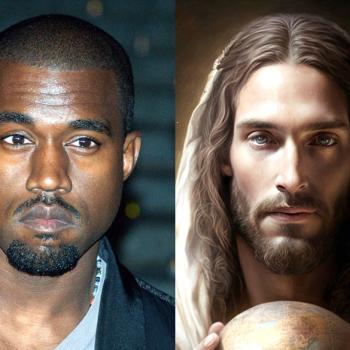Last week, I summarized Thomas Aquinas’s argument to the effect that human beings do not create. As Thomas would have expected, there’s another side to the story – a sed contra – neatly outlined by Robert Miner in his Truth in the Making. Miner agrees that Thomas denies the existence of human “creativity,” but points to lines of argument that strengthen the analogy between human making and divine creation.
Thomas sometimes uses craft analogies to describe creation: “the scientia Dei is to all res created as the knowledge of the artifex is to artificiata (artificial things).” God knows what He wants to make. When knowledge is joined to will, creation happens.
That is similar to what happens when an artisan sets out to make. He knows, wills, and then employs matter and tools to form what he first thought.
Creation isn’t the same as craft because distinctions that are inherent in craft don’t pertain (Miner is appealing to RG Collingwood here). Craft involves distinctions between means and ends, planning and execution (with a temporal gap between the two), form and matter.
God uses no means in creating the world, so there’s no means-end distinction. There is no distinction of planning and execution, and so no temporal sequence between God’s intention and the execution of that intention.
God doesn’t make use of prior matter on which God exercises a craft. Unlike the craftsman, God brings the matter and form into being. Unlike craft, creation doesn’t depend on the distinction of form and matter, and so creation is thus not a technical transformation of matter.
This may seem to diminish human making. On the contrary, Thomas intends, Miner says, to elevate “the gnoseological value of human art” (4).
Miner points to the analogy between the formation of concept of an crafted object and the generation of the Word. Thomas emphasizes that we need to know the Trinity in order to understand creation. If there are no ideas in the creation, then creation is made by chance: That’s a misunderstanding of creation. Yet, if the ideas are located somewhere other than the generated Word, then the ideas seem to be produced of necessity. God didn’t need to create; creation is not the product of an impersonal principle that “unity . . . diffuse itself into multiplicity” (6). God creates, Thomas says, out of “love of His own goodness.”
Attending to the processions of the Persons, then, helps us see that “creation is a free and intentional act, motivated by love rather than need” (6). And that is just the sort of activity involved in human making.
Miner presses the analogy by asking Thomas, Where do the exemplars of making come from? Sometimes artisans abstract forms from existing things, but that can’t be the whole story because human beings create things that have no exemplars in creation.
Exemplars thus can be be “interiorly conceived in the mind.” Thomas doesn’t call the formation of an artistic conception a “creation” but as a generation. Jacques Maritain emphasizes the importance of verbum mentis in Thomas’s understanding of making: “before the work of art passes from art into the matter, by a transitive action, the very conception of the art has had to emerge from within the soul, by an immanent and vital action, like the emergence of the mental word” (quoted in Miner, 9).
Thomas puts it this way in his commentary on the Sentences: “the process of art is twofold, that is, from the soul of the artificer to his art, and from his art to his artifacts.”
At times, Thomas even comes close to the notion that we come to know in the process of making – making not as a linear sequence of planning and execution (on the craft analogy) but making that is necessary to arrive at insight.
Thus, though Thomas denies that humans create in a strict sense; they do “imitate God in their capacity to make things freely and intelligently” and in human ability to generate “an interiority conception of exemplars from which they transitively make” (9).
















